Javanese arts in Solo
On Wednesday after class, students traveled by commuter train up to Solo:
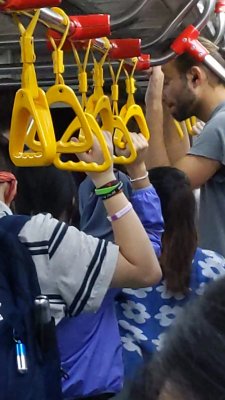
Quite the trip–standing room only! Luckily the train ride was just an hour, and everyone emerged (relatively) unscathed. The Setiawan family actually was on our way to Semarang for visa purposes, so our local coordinator, Ibu Diyah, traveled with the students.
Once in Solo, we had a couple of hours to rest. In Indonesia, most students have shifted to an earlier schedule– up at 6:00 or earlier, so generally we’re tired pretty early in the evening. Tonight though, we knew that we would be up late for an introduction to gamelan and a performance, so many of us used that time to actually take a nap. Wah!
We made our first foray to Ibu Kitsie’s and Pak Wakidi’s house, in which they are fashioning an arts institution. We had an amazing supper, and then began to learn about the gamelan from Ibu Kitsie. She and her husband Pak Wakidi are well-known gamelan musicians (Pak Wakidi is famous enough that Brenton asked him to sharpie-sign a rock!).
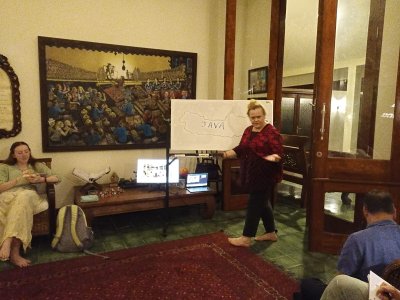
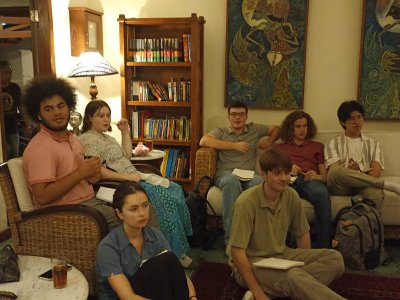
Following an introduction, we began to learn how to listen to gamelan music. We were able to walk around and watch individual performers and Ibu Kitsie talked us through what we were hearing.





We headed back to the hotel for a good night’s rest and returned the next morning for an introduction to the different instruments that make up the gamelan. Kitsie stared with gamelan music theory lesson:

We quickly progressed to the first instrument– the demung:
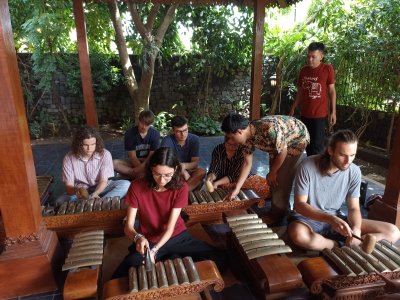
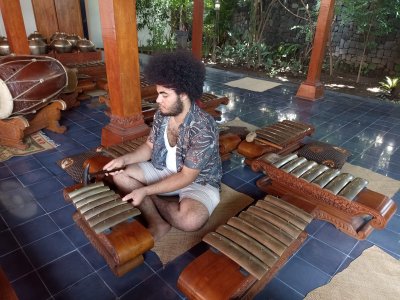



We learned that beginning musicians start out on the demung, and move their way up over time. There were actually 7 complete demungs at Ibu Kitsie’s and Pak Wakidi’s house– this is common. These instruments are in the back of the gamelan and typically form the melody.
But we got to play on many other instruments!
The gender:


The kenong:


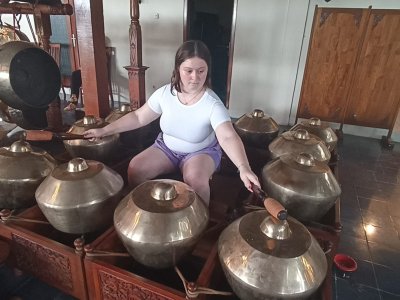
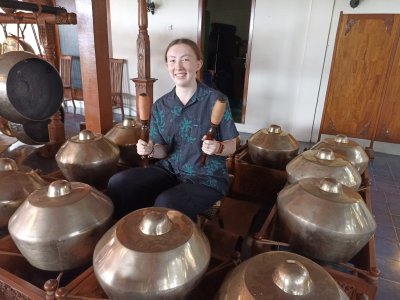


The gong besar (literally “big gong”):


We had the opportunity to learn so much and practice this unique instrument. We finished up our session around 1:00, had a delicious lunch and spent the rest of the afternoon learning about wayang puppetry. While wayang are traditionally “shadow puppets,” in the last 50 years, audiences have moved from behind the screen to in front of it. Now wayang are almost always performed with the wayang puppets in front of the screen. It’s not hard to see why when you have the chance to look closely at the detail on a wayang puppet. All that color would be lost behind a screen. And did you know that wayang puppets are made out of water buffalo skin? Neither did we!










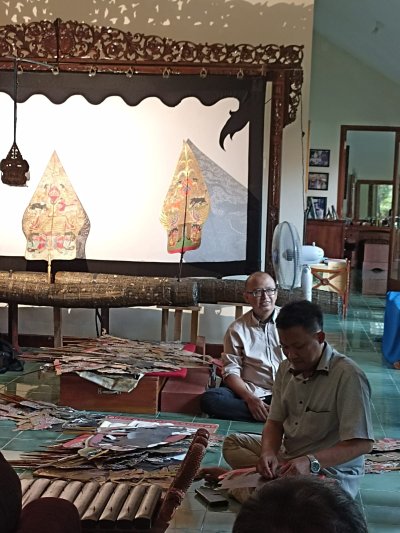
I’m going to split this trip into 2 posts, since my computer is slow at loading pictures at the moment and I don’t want to lose what I have. Watch for the rest tomorrow!




